
One of the fastest growing services on the Alaska Railroad is the area of intermodal freight. The railroad has beefed up its facilities in Whittier, Seward, Anchorage and Fairbanks to handle an ever growing amount of containerized goods. Intermodal containers have an advantage of reducing damage and loss while improving security.
The ARRC owns fourteen articulated (i.e. "shared axels) T/COFC flat cars (19401-19414) which were built in 1991 by National Steel Car Limited for B. C. Rail. These were built for three-each 53-foot (or smaller) containers or trailers with a 300 ton capacity, 100 per slot.
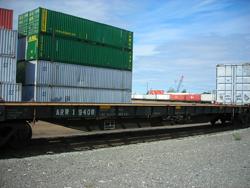 |
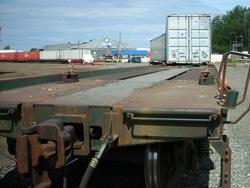 |
 |
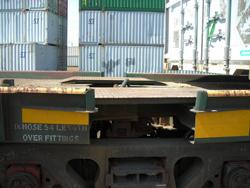 |
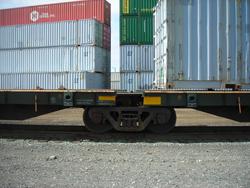 |
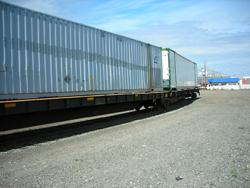 |
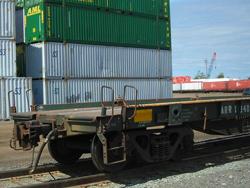 |
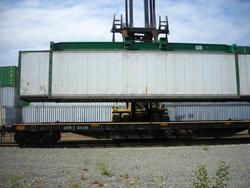 |
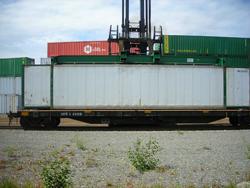 |
Intermodal Information, Curt Fortenberry, 4/5/04
The four ex-BCR cars are 3 platform intermodal cars, capable of carrying 53' containers. ARR also acquired previous to those, 18 former CN 88' container flatcars that will also handle 53' containers. About the only other way ARR can handle a 53' box is on a regular flatcar. They don't use double stacks in Alaska.
ARR does have many three platform articulated trailer only units. They also have some 89' TTX flats on lease (some still with the circus style loading ramps), and some CRLE container flats, although I've only seen them carrying the tank-containers.
As others have noted, the rail barges come into Whittier, and the port of Anchorage handles container ships (notably the CSX or Horizon Lines, and Tote's ships).
The major players in handling freight via rail are:
Probably more variety in Anchorage than what I see in Fairbanks. Lynden, Sealand, and Tote seem to be the preference of the larger commercial retail outlets. They are the three predominant carriers, so they can probably offer better rates to larger, frequent shippers.
See also
Many thanks to Malcolm Cleaveland for providing this information and Stephenie Wheeler for the photographs!
© 2010 John Combs unless otherwise noted
Page created 8/24/10 and last updated 9/21/10